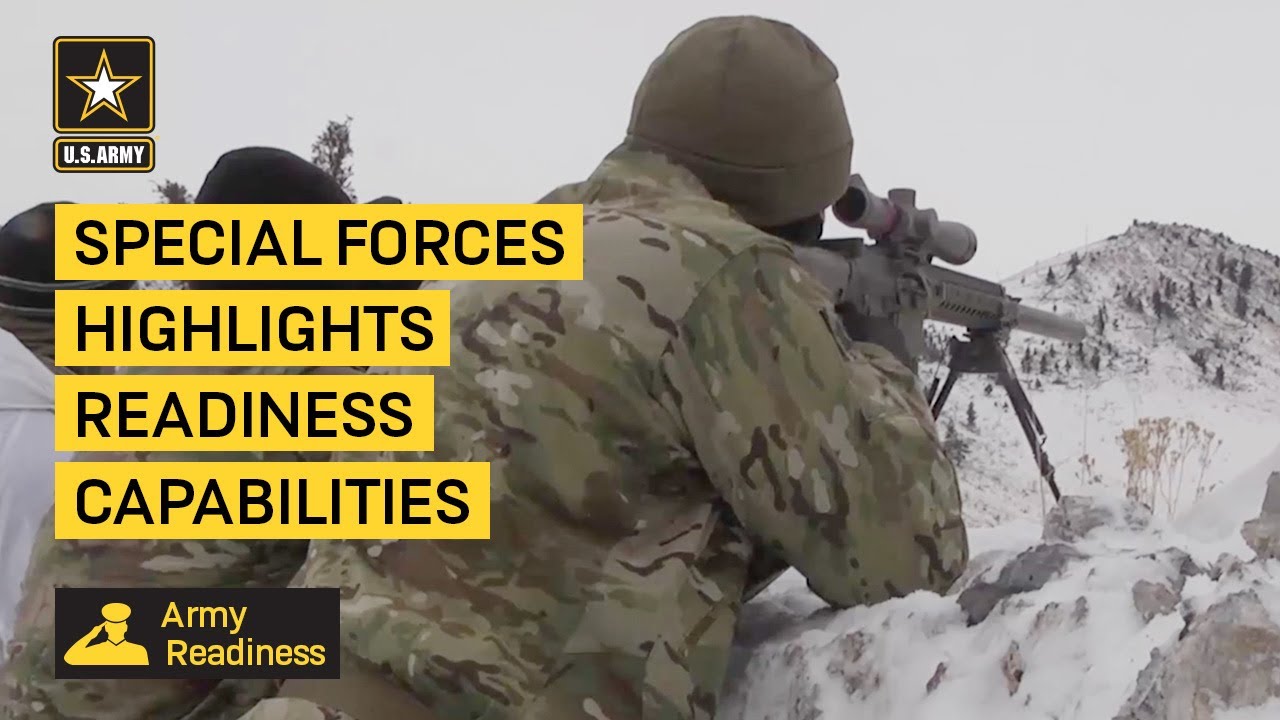Taken last week this video demonstrates the 10th Special Forces Group (Airborne) areas of readiness. They maintain high standards in physical fitness, training, daily performance, and personal appearance.
There’s a great deal of preparedness going on right now, and quite a lot of restructuring:
354th Fighter Wing at Eielson Air Force Base, Alaska is using the shortest days of the year to prepare for war in the Arctic under darkness and amid harsh weather conditions. Every flying unit at the base was assembled on the runway for what the Air Force calls an Elephant Walk. More than thirty fighters and two refueling aircraft participated in the exercise. (Here)
Given the last several decades of U.S. military war campaigns in Iraq and Afghanistan, many are likely to regard Special Operations Forces such as Navy SEALs or Special Naval Warfare units as primarily focused upon and experienced in counterinsurgency missions. While such a thought would indeed be accurate when it comes to the SOF mission envelope, war planners also see Special Operators as increasingly vital when it comes to the possibility of major-power maritime conflict as well. (Here)
For the nearly 200 candidates scrambling through Hoffman Forest at Camp Mackall, the struggle to become a Green Beret is real. But Army commanders are making sweeping changes to shorten and revamp the course. The aim is to meet evolving national security threats and to shift from a culture that weeds out struggling soldiers at every point to one that trains them to do better. (Here)
Special operations forces were the first deployed in the war in Afghanistan nearly 20 years ago and likely will be the last troops to leave the country, acting Defense Secretary Christopher Miller said after visiting U.S. forces and American military leadership in Afghanistan… (Here)
Change is coming to the U.S. Marine Corps. For decades, the service pinballed between two different roles, serving as an amphibious “second land army” in both world wars, but specializing in counter-insurgency and police action for most of the rest of its history. In two recent documents — the Commandant’s Planning Guidance and Force Design 2030 — the Marine Corps officially embraced support to fleet operations as its preeminent purpose. The Marine Corps seeks to enable the U.S. Navy’s access to contested areas and support the penetration of adversary air and maritime defenses while simultaneously disrupting enemy efforts to threaten the U.S. fleet. Operationally, the Marine Corps’ concept for expeditionary advanced base operations calls for a dispersal of the force. This creates the potential to dismantle Marine air-ground task forces — the most hallowed organizing principle in modern Marine doctrine and culture…U.S. Special Operations Command should take a keen interest in the modernization efforts of the Marine Corps. They serve as a live-action case study for dramatic organizational change — the sort of change that Special Operations Command may now be expected to enact. (Here)
As a term, “Irregular Warfare” generates strong emotions within the Department of Defense and across the U.S. government. Proponents welcome the increased focus it gives to influence and legitimacy, and consider this emphasis to be indispensable amidst the irregular competition posed by asymmetric threats across the competition continuum. Opponents may accuse IW as being conflated with all of competition, disregard IW in favor of singular emphasis on conventional deterrence, opt for investment in incrementally improving warfighting potential, or defer all activities short of war to other departments and agencies. (Here)
